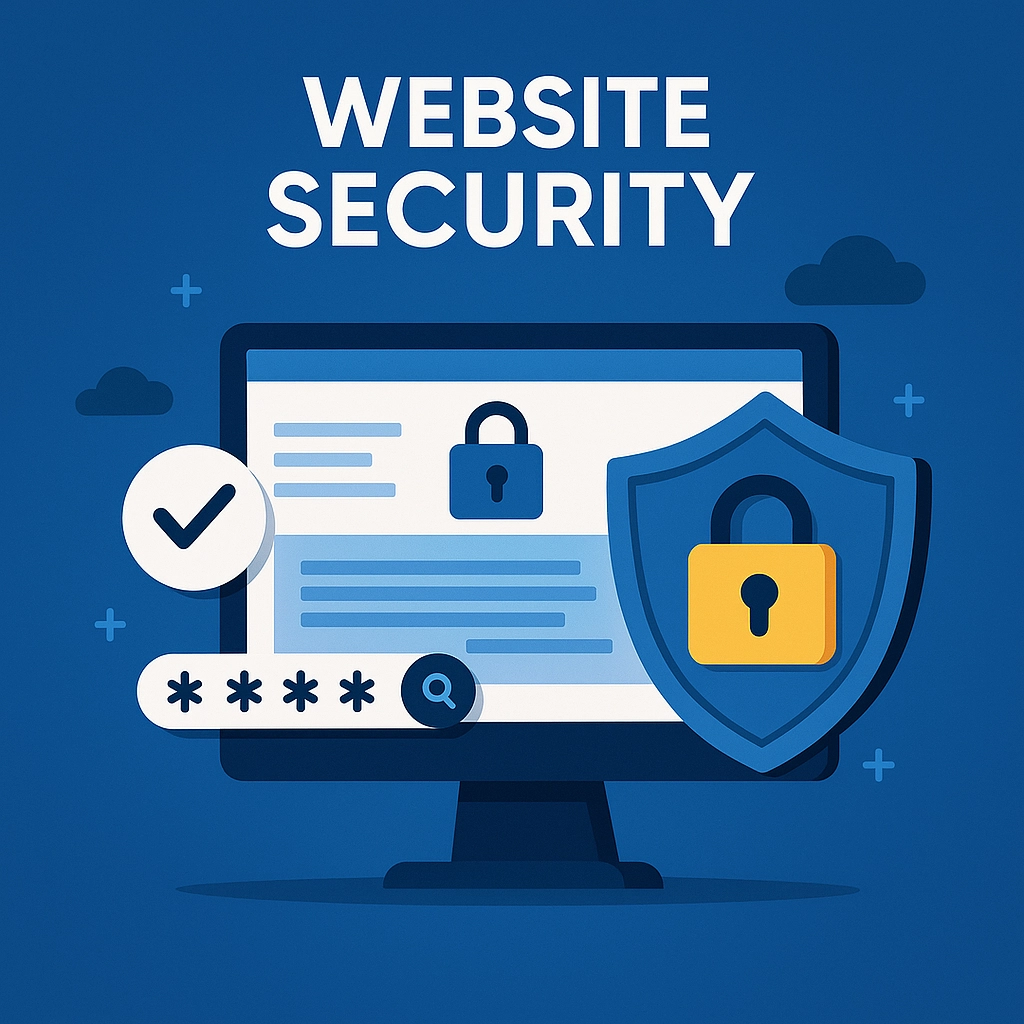
Keeping a website secure is no longer optional — it’s an essential part of running a business online. Whether you run a portfolio, e-commerce store, blog, or a company site, hackers can target you with automated attacks that run 24/7.
The good news? You do not need to be a cybersecurity expert to protect your site. In this beginner-friendly guide, we’ll walk through the most important steps every website owner should take in 2025.
⭐ Why Hackers Target Websites (Even Small Ones) Link to heading
Many small business owners believe:
“Why would hackers target my website? It’s too small.”
This is exactly what makes small websites vulnerable.
Hackers don’t manually pick sites — they run automated bots that scan millions of websites each day looking for:
- Weak passwords
- Outdated plugins or themes
- Exposed admin panels
- Misconfigured servers
- Missing SSL certificates
- Publicly accessible databases
If your website is online, it can be targeted.
🔐 1. Use Strong Passwords + Multi-Factor Authentication (MFA) Link to heading
Your admin account is the “front door” of your website. If someone breaks in, they can:
✔ Deface the site
✔ Steal user data
✔ Inject malware
✔ Redirect your traffic to scam sites
✔ Harm your SEO ranking
Do this immediately: Link to heading
- Use a password manager (Bitwarden, 1Password, NordPass)
- Enable MFA on your hosting + admin login
- Change any default “admin” usernames
Even if your password leaks, MFA stops the attacker.
🛡️ 2. Always Keep Your Website Updated Link to heading
Most hacks occur because of outdated:
- CMS systems (WordPress, Drupal, Joomla)
- Plugins
- Themes
- Server software
Why updates matter: Link to heading
Updates patch vulnerabilities that hackers actively exploit.
Recommended: Link to heading
- Enable automatic updates
- Remove plugins you don’t use
- Update server OS regularly (if using VPS)
🔒 3. Install SSL (HTTPS) — It’s Free Now Link to heading
If your site shows “Not Secure” in the browser, visitors may leave — and Google lowers your ranking.
SSL keeps: Link to heading
✔ passwords
✔ login sessions
✔ customer information
✔ admin cookies
…fully encrypted.
How to install SSL: Link to heading
- Cloudflare
- Let’s Encrypt
- Your hosting provider (most offer 1-click SSL)
Your site must load only HTTPS — redirect HTTP → HTTPS.
🚫 4. Protect Your Admin Login Page Link to heading
Hackers constantly attempt brute-force login attempts.
Do this to protect your admin area: Link to heading
- Change URL of admin page (WordPress example:
/wp-admin→ custom) - Use rate limiting (block after X failed attempts)
- Enable firewall rules
- Block international traffic if local users only
If you’re using Cloudflare, set:
Firewall → Protect Admin Path
For example:
🧱 5. Enable a Web Application Firewall (WAF) Link to heading
A WAF protects you from:
- SQL injection
- Cross-site scripting (XSS)
- Bot attacks
- Malware uploads
- Zero-day vulnerabilities
Recommended WAF providers: Link to heading
- Cloudflare WAF (Free + Pro)
- AWS WAF
- Sucuri WAF
- Wordfence (WordPress)
For most websites, Cloudflare Free is enough.
🛠️ 6. Regular Backups — Your Last Line of Defense Link to heading
Even with strong security, things can go wrong.
Always maintain: Link to heading
- Daily automated backups
- Off-site backups (Google Cloud, AWS S3, Backblaze)
- Quick restore plan
If your site is hacked, restoring a clean backup takes minutes.
🧼 7. Malware Scanning & Monitoring Link to heading
Websites get infected silently — often without visible symptoms.
Use malware scanners: Link to heading
- Sucuri SiteCheck
- Wordfence Scanner
- VirusTotal for file scanning
- Quttera Web Malware Scanner
Set up weekly scans.
🧑💻 8. Secure Your Hosting Environment Link to heading
If you’re using shared hosting, VPS, or cloud hosting, apply:
Shared hosting: Link to heading
- Disable file editing through dashboard
- Use the latest PHP version
- Enable isolation (if allowed)
VPS / Cloud: Link to heading
- Disable root SSH login
- Use SSH keys instead of passwords
- Set up firewall rules
- Keep system packages updated
📉 9. Reduce Attack Surface Link to heading
Remove:
- Old backup files (
backup.zip,test.php, etc.) - Unused admin accounts
- Unused plugins/themes
- Demo or sample content
Hackers love abandoned files.
🧭 10. Monitor Website Activity Link to heading
Watch for:
- New admin users
- Sudden traffic spikes
- Suspicious PHP files
- Redirects added to your .htaccess
- Unusual outgoing requests
Monitoring tools: Link to heading
- Cloudflare Analytics
- Google Search Console
- Hosting-level logs
- UptimeRobot (monitor downtime)
🧩 Bonus: Use Cloudflare for Free Security Link to heading
Cloudflare gives you:
- DDoS protection
- Basic WAF
- Bot protection
- Free SSL
- URL rewriting
- Analytics
- CDN for performance
Highly recommended for any site in Pakistan.
🔚 Final Thoughts Link to heading
Website security is not a one-time task — it’s an ongoing process. But with the steps in this guide, even beginners and small businesses can achieve strong, reliable protection against the most common cyber threats.
If you need a professional audit, configuration, or monitoring setup, I can help you secure your website end-to-end.
Written by Shayan Anique Akhtar, IT Consultant & Cybersecurity Specialist.